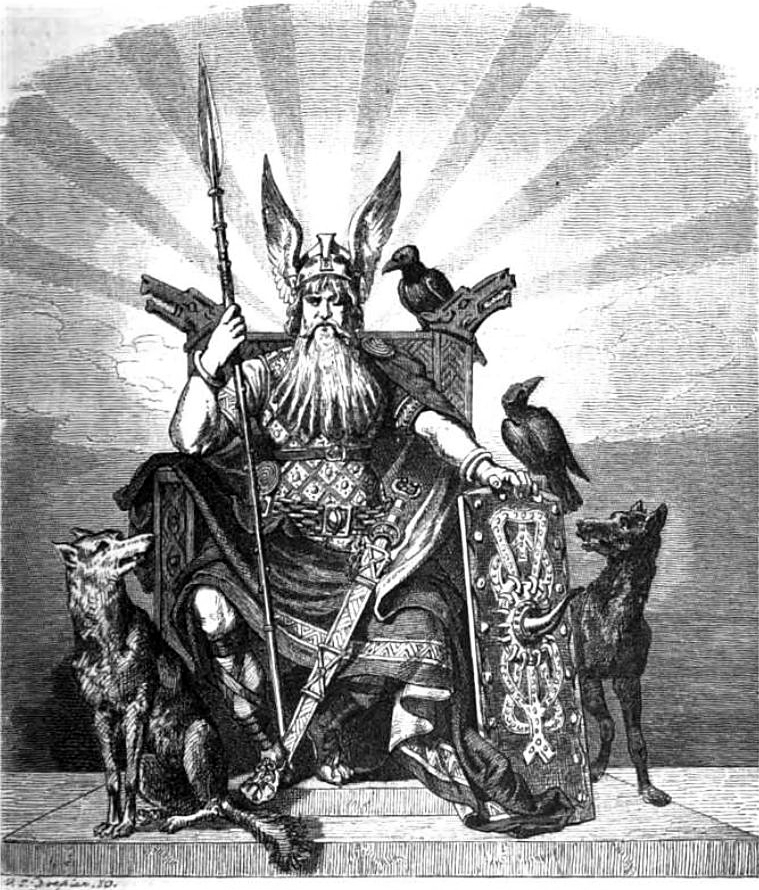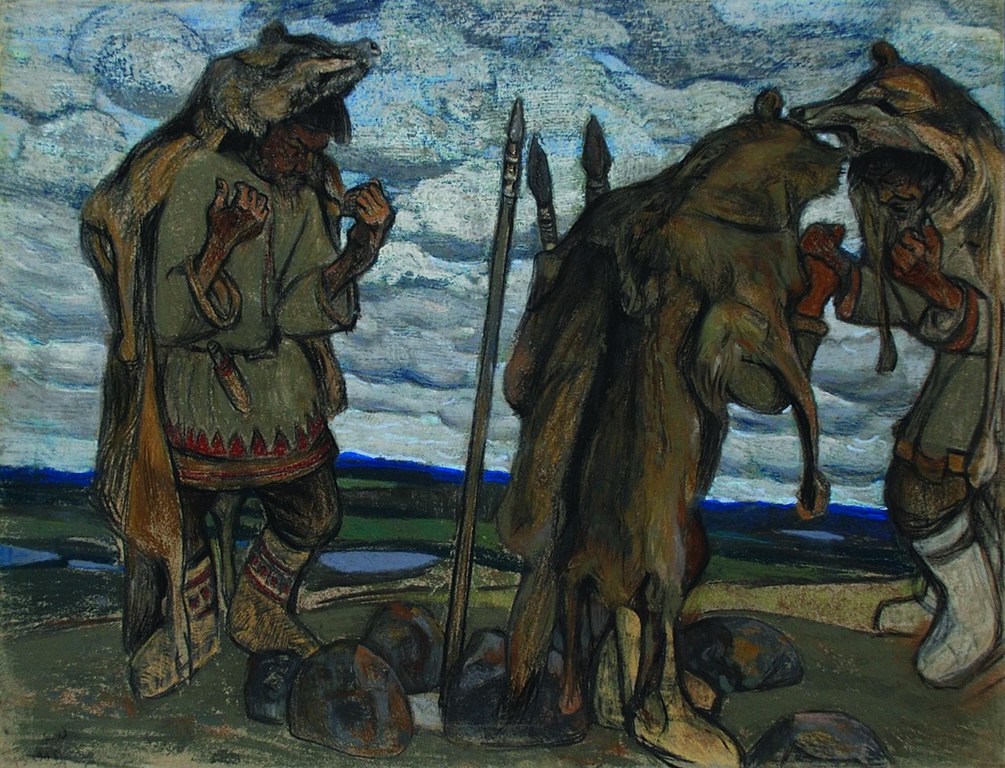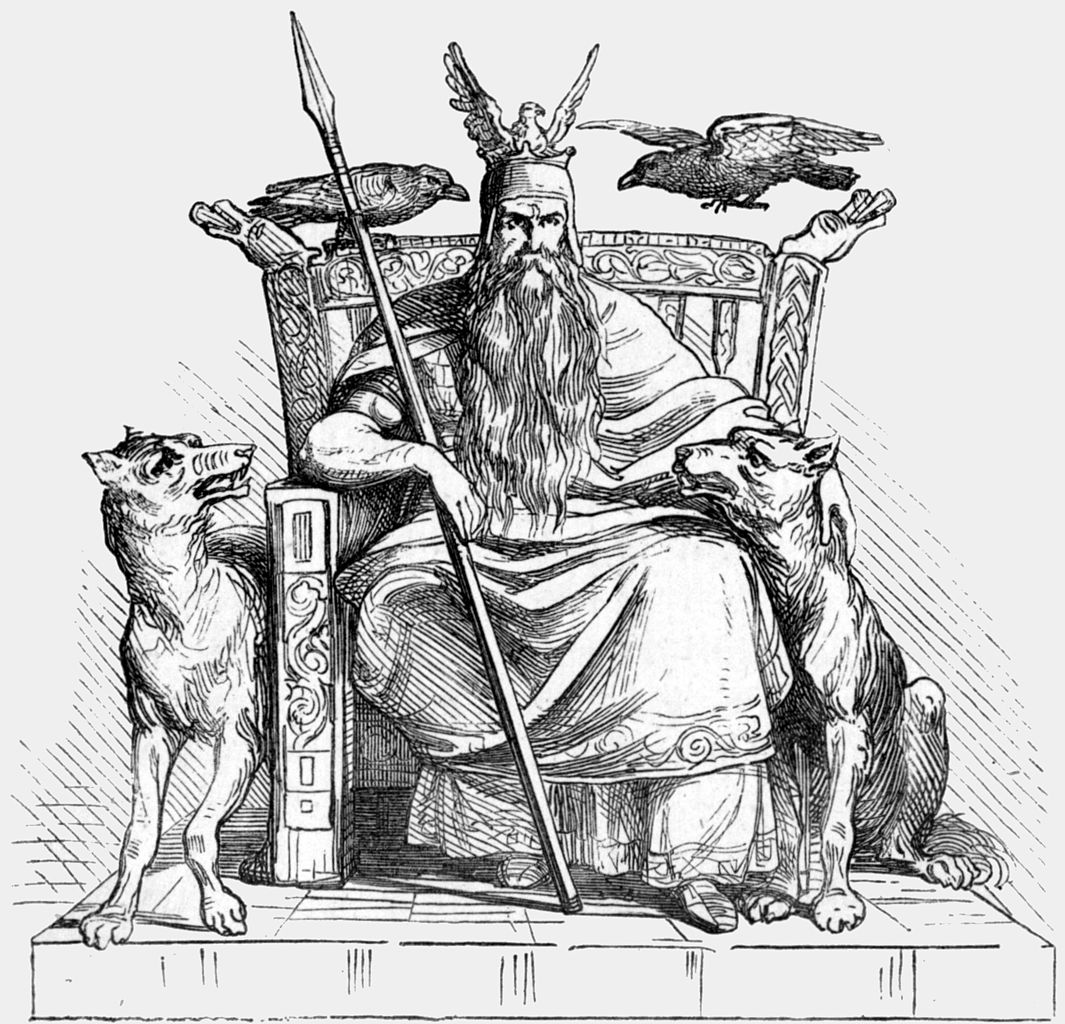Geri and Freki are the wolves of Odin. The wolves Geri and Freki weren't just the companions of Odin. Geri and Freki were said to have helped the Valkyries carry chosen souls to their home in Valhalla. The pair of loyal wolves were also an integral part of the lives of the first humans, Ask and Embla.
The Norse god Odin’s wolves Geri and Freki were the Allfather god’s loyal companions. Although some wolves in Norse mythology were evil, Geri and Freki were good wolves. They’re often confused with the wolves Skoll and Hati, who are descendants of Fenrir, son of Loki. The two pairs of wolves couldn’t be more different.
Geri and Freki also inspired wolf warrior bands during the Viking age. These groups of pagan warriors used wolf skin for protection and called themselves Ulfhednar. Ulfhednar are commonly associated with Berserkers, who wore bearskins into battle and were known to be incredibly violent. In contrast, the Ulfhednar were more organized and loyal to their warrior pack.
The story of Geri and Freki in Norse mythology
The Æsir God Odin created Geri and Freki as companions. They lived in Asgard, laying beside Odin’s feet during feasts Odin shared with fallen warriors in Valhalla. The wolves of Odin ate scraps of meat given to them by Odin, who needed only wine to sustain himself.
When Odin and his brothers created the first humans, Geri and Freki nurtured Ask and Embla. Odin ordered Ask and Embla to learn from the wolves, who raised the pair and taught the humans how to survive in Midgard.
From Odin’s wolves, the first humans learned wisdom, courage, love, and loyalty to the pack.
What do the names Geri and Freki mean?
The names Geri and Freki can both mean “greedy,” depending on the context and Nordic language.
The name Geri commonly means “greedy” or “greedy one.” The name Freki means “ravenous one.” Their names are sometimes written as Gere and Freke.
Geri comes from the Proto-Germanic word geraz, which means “greedy” or “gluttonous.” The Old Norse version of Geri is Gerr. Freki is also linked to the Old Norse Frekr, which means “greedy,” “gluttonous,” or “covetous.”

Geri and Freki – symbolic meaning
The wolves of Odin symbolize loyalty, courage, and wisdom.
Wolves are very important Viking symbols, but the wolf itself informs the symbolic meaning. While Geri and Freki symbolize loyalty and courage, Fenrir represents chaos.
Symbols were a very important part of the Viking age. From Thor’s hammer Mjölnir to runes and even mistletoe, so much of Norse mythology is rooted in symbols.
Did Geri and Freki come before Odin’s Ravens?
Odin’s wolves Geri and Freki came before Odin’s ravens.
The companion wolves also came before the creation of the first humans. According to Norse myths, Odin was lonely and created the wolves to keep him company.
Even though they came after the wolves Geri and Freki, Odin’s ravens Huginn and Muninn were a big part of the Norse myths involving the two wolves. Huginn and Muninn would help find prey for Geri and Freki.
The wolves did not hunt for themselves, so they only ate when fed by Odin from the table in Valhalla or by Odin’s ravens.
Are Geri and Freki related to Fenrir?
No, Geri and Freki are not related to Fenrir. Fenrir is the son of giants Loki and Angrboda. Fenrir’s descendants are the wolves Hati and Skoll. Like Fenrir, Hati and Skoll were no friends to the gods.
Because wolves are such a common fixture in Viking symbols, many confuse wolves Geri and Freki with other wolves in Norse mythology. They were the creation of the god Odin as companions.
Hati and Skoll were wolf brothers and descendants of Fenrir who played a pivotal part in Ragnarök. At the start of Ragnarök, Hati and Skoll devoured the sun and the moon, fulfilling a prophecy of Ragnarök.
Geri and Freki attestations
Attestations of Geri and Freki are present in the Prose Edda by Icelandic Historian Snorri Sturluson and in the Poetic Edda. The wolves of Odin also appear often in Skaldic poetry.
Like Eddic poetry, Skaldic poetry is part of the rich oral tradition of Old Norse poetry. The Vikings considered poetry to be a gift from Odin.
The story of Geri and Freki appears in the Poetic Edda poem Grímnismál where Odin disguises himself as Grimnir.
In the Prose Edda, wolves Geri and Freki are mentioned in three sections: the Gylfaginning, the Skáldskaparmál, the Háttatal. The wolves of Odin are not mentioned in the Prologue of the Prose Edda.
Viking Wolf Warrior bands Inspired by Geri and Freki
The Viking Wolf Warrior bands were known as Ulfhednar (Úlfhéðnar). Ulfhednar means wolf-hide or werewolf. These warrior wolves of Odin wore wolf hides as protection when they went into battle and were known to hunt in small packs.

Ulfhednar were inspired by the legends of Odin, who came to Midgard in wolf form. There, he mated with humans, creating Volsungs. These half-human, half-wolf children of Odin could turn themselves into wolves when needed. Ulfhednar believed that Odin led their warrior bands, taking the form of a wolf to join them in battle.
The Ulfhednar revered wolves and did not hunt them. The pelts they wore were taken from wolves who were already dead. These pelts were often given as a gift, skinned, and processed by an Ulfhednar warrior to welcome a new member into the wolf pack.
Ulfhednar strongly identified with the spirit of the noble wolf and saw themselves as an extension of Odin’s loyal companions, Geri and Freki.

